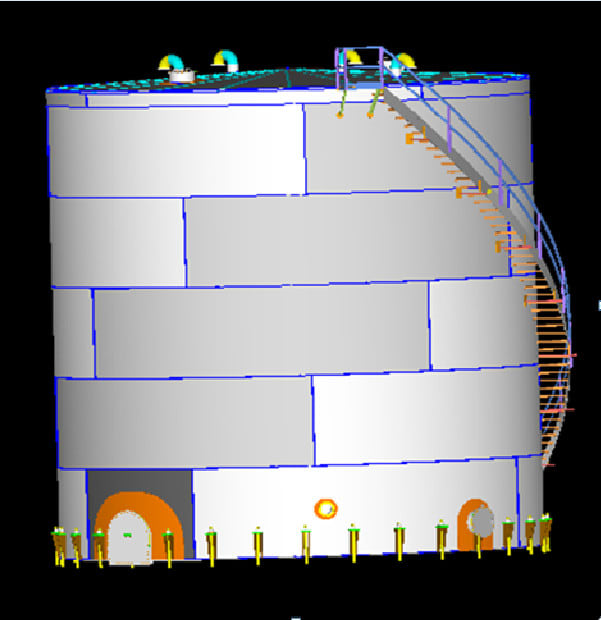

Dome roof tanks are meant for tanks having slightly higher storage pressure than that of atmosphere (e.g. These are insulated to prevent the clogging of certain materials, wherein the heat is provided by steam coils within the tanks. fuel oil, water, bitumen etc.) Cone roofs, dome roofs and umbrella roofs are usual. Fixed roof tanks are meant for liquids with very high flash points, (e.g.Generally in refineries and especially for liquid fuels, there are fixed roof tanks, and floating roof tanks. Tanks for a particular fluid are chosen according to the flash-point of that substance.
#Api 650 tank design ppt free
These type of foundations keep the tank bottom plates free from water, therefore preventing corrosion. Outside the United States and at some locations in the United States, elevated tank support foundations with a sand bitumen mix finish are often used. The most effective and common corrosion control techniques for steel in contact with soil is cathodic protection. In the United States, metal tanks in contact with soil and containing petroleum products must be protected from corrosion to prevent escape of the product into the environment. Floating roofs are considered a safety requirement as well as a pollution prevention measure for many industries including petroleum refining. This floating roof rises and falls with the liquid level inside the tank, thereby decreasing the vapor space above the liquid level. Some storage tanks need a floating roof in addition to or in lieu of the fixed roof and structure. This usually involves building a bunding, or containment dike, around the tank, so that any leakage may be safely contained. Since most liquids can spill, evaporate, or seep through even the smallest opening, special consideration must be made for their safe and secure handling. EPA's AP-42: Compilation of Air Emission Factors.Ĭylindrical fuel storage tank with fixed roof and internal floating roof. Quantification of potential emissions for permitting purposes is most often accomplished by applying emission equations published in Chapter 7.1 of the U.S. In the U.S., air emissions, which correspond to losses for usable liquid commodities and/or salable products, are typically required to undergo air quality permitting under the Federal Clean Air Act. Most container tanks for handling liquids during transportation are designed to handle varying degrees of pressure.Ī large storage tank is sometimes mounted on a lorry (truck) or on an articulated lorry trailer, which is then called a tanker.

Large tanks tend to be vertical cylindrical, or to have rounded corners transition from vertical side wall to bottom profile, to easier withstand hydraulic hydrostatically induced pressure of contained liquid. Storage tanks are available in many shapes: vertical and horizontal cylindrical open top and closed top flat bottom, cone bottom, slope bottom and dish bottom. Covered water tanks are common in urban areas.

Reservoirs can be covered, in which case they may be called covered or underground storage tanks or reservoirs. Above ground storage tanks can be used to hold materials such as petroleum, waste matter, water, chemicals, and other hazardous materials, all while meeting strict industry standards and regulations. Above-ground storage tanks (ASTs) differ from underground storage tanks (USTs) in the kinds of regulations that are applied. There are usually many environmental regulations applied to the design and operation of storage tanks, often depending on the nature of the fluid contained within. Storage tanks are often cylindrical in shape, perpendicular to the ground with flat bottoms, and a fixed frangible or floating roof.

In the USA, storage tanks operate under no (or very little) pressure, distinguishing them from pressure vessels. In other countries, the term tends to refer only to artificial containers. The usage of the word tank for reservoirs is uncommon in American English but is moderately common in British English. The term can be used for reservoirs (artificial lakes and ponds), and for manufactured containers. Storage tanks are containers that hold liquids, compressed gases (gas tank or in U.S.A "pressure vessel", which is not typically labeled or regulated as a storage tank) or mediums used for the short- or long-term storage of heat or cold. Spherical gas tank farm in the petroleum refinery in Karlsruhe MiRO


 0 kommentar(er)
0 kommentar(er)
